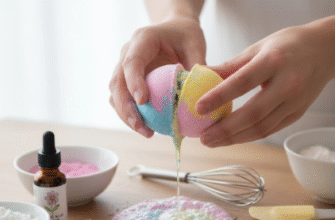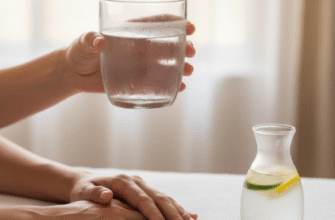There’s nothing quite like the cozy ambiance a flickering candle brings to a room. The soft light, the gentle scent – it’s relaxing. But then you notice it: that annoying pit forming right down the center, leaving a thick ring of unused wax clinging stubbornly to the sides of the jar. That, my friends, is candle tunneling, and it’s more than just unsightly. It wastes precious wax, shortens your candle’s life, and can even smother the wick. The good news? Preventing and even fixing candle tunneling is often easier than you think.
Understanding Why Candles Tunnel
At its core, candle tunneling is usually caused by an incomplete first burn. Wax has what’s called ‘memory’. On the very first light, the pool of melted wax that forms sets the boundary for every subsequent burn. If you extinguish the candle before the melted wax reaches the entire edge of the container, a ‘memory ring’ forms at that smaller diameter. The next time you light it, the wax will likely only melt out to that ring, digging the tunnel deeper and deeper with each use, leaving the outer wax untouched.
Another culprit can be the wick itself. If the wick is too small for the candle’s diameter, it simply won’t generate enough heat to melt the wax all the way across. Conversely, a wick that’s too large might burn too hot and fast, but tunneling is primarily associated with too small a wick or, more commonly, improper burning habits, especially that crucial first time.
Prevention: The Absolute Key
You’ve heard it before, but it bears repeating because it’s the single most effective way to prevent tunneling: nail the first burn. This initial lighting is critical for setting the candle’s ‘memory’.
The First Burn Rule
The general rule of thumb is to let the candle burn for approximately one hour for every inch of its diameter. So, a 3-inch diameter candle should burn for about 3 hours the first time you light it, or at least until the pool of melted wax reaches the very edges of the container. This ensures the entire top layer liquefies and establishes a wide memory ring.
Verify the Melt Pool: Don’t just rely on the clock. Visually check that the liquid wax pool extends fully to the container’s sides before extinguishing the candle on its initial burn. This establishes the correct burning pattern for future use. Patience during this first burn saves wax and frustration later.
Resist the urge to blow it out after just an hour if you only wanted a little ambiance. Committing to this full melt pool on the first go is your best defense against future tunneling.
Other Preventative Measures
- Trim Your Wick: Before every single burn (including the first!), trim the wick to about 1/4 inch. A long, mushroomed wick burns inefficiently, creates soot, and can lead to uneven melting. Use a wick trimmer for a clean cut.
- Avoid Drafty Areas: Placing your candle near open windows, vents, or fans can cause the flame to flicker excessively. This leads to uneven burning and can encourage tunneling on one side. Find a calm spot for your candle to burn steadily.
- Burn Long Enough Each Time: While the first burn is paramount, subsequent burns also matter. Try to let the candle burn long enough each time for the wax pool to at least approach the edges again. Consistently short burns, even after a good first burn, can still encourage some tunneling over time, though usually less severe.
- Choose Quality Candles: Sometimes, despite your best efforts, a poorly made candle will tunnel. This often happens when the manufacturer uses a wick size that’s simply inappropriate for the candle’s diameter or wax type. Investing in well-made candles often pays off in better performance.
Easy Fixes for an Already Tunneled Candle
Okay, so prevention failed, or maybe you inherited a tunneled candle. Don’t despair! There are ways to rescue it and reclaim that trapped wax.
The Tinfoil Tent Method
This is perhaps the most popular and effective DIY fix. It works by trapping heat around the top of the candle, gently melting the stubborn ring of hard wax.
How to do it:
- Light the candle.
- Carefully wrap a piece of aluminum foil around the top edge of the candle jar, creating a sort of dome or tent over the top. Leave an opening in the center for the flame to breathe and oxygen to flow – don’t seal it completely!
- Ensure the foil extends slightly over the edge, directing heat downwards onto the hard wax ring.
- Let the candle burn like this for an hour or two. Keep a close eye on it. The trapped heat should melt the hardened wax, allowing it to merge with the central melt pool.
- Once the surface is level, carefully remove the foil (it will be hot!) and extinguish the candle. Let it cool completely.
Handle Foil with Care: The aluminum foil will become very hot during this process. Always use caution when applying and removing it. Never leave a candle burning unattended, especially when using the foil method. Ensure the central opening is large enough to prevent the flame from getting too high or extinguishing itself due to lack of oxygen.
The Hair Dryer or Heat Gun Method
If you’re careful, you can use focused heat to melt the raised wax edges.
How to do it:
- Place the candle on a heat-resistant surface, perhaps with some paper towels underneath to catch drips.
- Set a hair dryer to a medium or high heat setting (or use a heat gun on a low setting).
- Direct the hot air towards the hardened wax ring around the edges. Keep the dryer moving; don’t focus intense heat on one spot for too long, especially with a heat gun, as this could overheat the glass or wax.
- The wax should begin to soften and melt down into the center tunnel.
- Continue until the surface looks relatively even. Be careful not to blow melted wax out of the container or blow out the wick if it’s lit (it’s often safer to do this with the candle unlit, just melting the surface).
- Let the wax cool and resolidify evenly.
This method can be a bit messier than the foil trick, and requires careful handling of the heat tool.
Carving Down the Edges (Use Sparingly)
For minor tunneling, you might physically remove the excess wax.
How to do it:
- Use a butter knife, a spoon, or a specialized candle tool.
- Carefully scrape or carve away the excess hard wax from the sides, trying to level it with the central depression.
- Remove the scraped wax shavings from the candle. Don’t just push them down, as this can potentially smother the wick.
- Once leveled, you can light the candle and hope it burns more evenly. This method is often best combined with the foil technique afterward to ensure a smooth surface.
Be cautious not to damage the wick or dig too deeply.
Resetting the Surface (More Involved)
For severe tunneling, sometimes a full reset is needed. You can place the candle jar (if oven-safe!) in a warm oven (very low temperature, around 170°F or 75°C) until the entire top layer melts and levels out. Alternatively, placing the candle on a dedicated candle warmer plate will achieve the same result over time. Once melted and level, turn off the heat source, let it cool completely undisturbed, and then trim the wick before relighting. Always check if your container is oven-safe before attempting this.
When Hope Is Lost
Sometimes, a candle tunnels so severely that the wick becomes perpetually drowned in melted wax, or there’s simply too little wick left to sustain a flame capable of melting the wax diameter. In these cases, rescuing it as a standard burning candle might be impossible. You could still salvage the wax by breaking it up and using it in a wax warmer.
Candle tunneling doesn’t have to mean the end of your favorite scent. By understanding why it happens, prioritizing that crucial first burn, and employing consistent care like wick trimming, you can prevent it most of the time. And for those times when tunneling does occur, having a few easy fixes like the foil method up your sleeve means you can often salvage your candle and continue enjoying its warm glow and fragrance down to the last drop. Happy burning!








